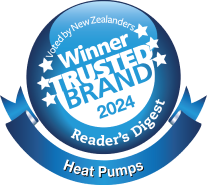1. Talk to a ventilation expert early in a new build planning process
It can be easy for homeowners to jump straight into the design aspect of planning, however this can often be the first mistake made. Too often people consider ventilation once their build is in progress or even complete and find their plans make installation difficult, more costly and often result in a make do application that isn't what they were initially after.

By bringing in a ventilation expert in the early planning stages you can save future headaches. Always ensure a ventilation system is integrated into plans to maximise efficiencies. Ducted air conditioning with combined Lossnay Ventilation is a perfect example of something that is best to bring in an expert early in the process for. Installation, ducting and wiring is far easier to manage before the ceiling is put in place, allows flexibility with outlet placement and Lossnay's heat recovery will add further efficiency to the air conditioner when in operation.
2. Make use of what is free with heat recovery technology
Ventilating our indoor spaces is more important than ever, but they should also be as energy efficient as possible.
Mitsubishi Electric's unique heat recovery technology recovers up to 85% of the heat energy from the outgoing stale air which is then used to pre-warm (or pre-cool) incoming fresh air. Why not take that warm air from the sunniest side of the house to pre-warm the outdoor air being filtered in? Or use the air you have already paid for to heat.

Heat recovery means any heating or cooling appliance does not have to work as hard to reach the desired room temperature – providing savings on energy bills.
3. Place ventilation ducts and grilles to maximise efficiency
Placement of ducts and grilles are almost as important as the system behind it.
Often ventilation systems are not working as efficiently as possible because they are drawing air from the coldest parts of the home and not taking advantage of those areas which are naturally warmer. It goes back to heat recovery, the best thing you can do is make use of that free energy.

4. Not all air is created equal. Fresh outdoor air rather than air from the roof-space is key to ensuring indoor air quality
To achieve compliance with the Ventilation Standard NZS4303:1990 of the New Zealand Building Code, a building's ventilation system is required to draw fresh air from the outside in order to achieve acceptable indoor air quality.
Not all air is created equal. The absence of significant air movement common in attics means the air is likely to be stale. In addition, build-up of dust, dirt and other contaminants such as mould, insect and rodent droppings makes this air much harder to filter before it is distributed through your home - it's not what you want to be breathing in.

All products in our Lossnay Ventilation Range draw fresh air from outside and filter this to maximise air quality. While systems that draw from the roof are less common since the standard was introduced, these systems can still be found in the market to target those wanting a retrofit solution for an older home.
5. Meet the requirements of the home, not just the Building Code
The New Zealand Building Code often asks for the bare minimum and by using this as a benchmark, the actual ventilation requirements of the property might not be met. Our code in New Zealand asks for 0.35 air changes per hour, however if you are really wanting to maximise your homes air quality this should be higher. When designing a Lossnay system, authorised Mitsubishi Electric installers refer to the higher UK standard of 0.43-0.5 air changes per hour.
Capabilities like this are important as they can easily be overlooked by price, but a low performing system can result in unmet expectations and ultimately a wasted investment.

6. Complement your system with a separate exhaust fan for wet areas such as bathrooms and laundries
While many systems including Lossnay can draw from moisture laden air, to get the most energy efficiency out of your heat recovery system, homeowners should install a separate Mitsubishi Electric Ducted Exhaust Ventilation Fan in wet areas such as bathrooms. While a bathroom can be warm during showers, when not in use they are often the coldest rooms in the home - so why combine that cold air to the air you are hoping to recover heat from and reduce the overall temperature you can recover? Exhaust fans do an excellent job at removing steam and moisture quickly and are turned off when not needed, saving energy use.

Click here to learn more about our Ventilation product range.


